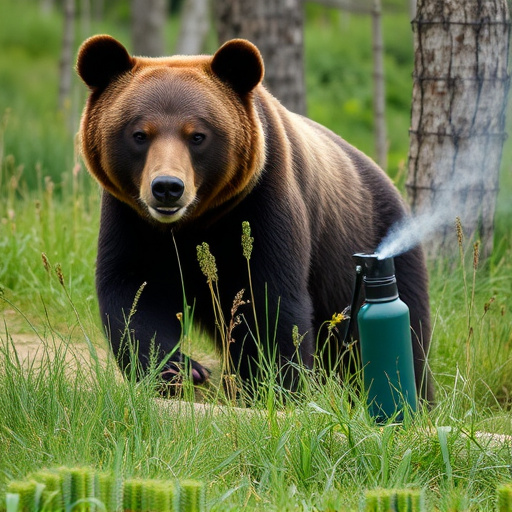Understanding bear behavior and the limitations of bear spray is vital for safe travel in regions with bear populations. Airport travel regulations regarding bear spray equipment must be understood to ensure passenger safety during security checks and emergencies. While useful under certain conditions, bear spray isn't foolproof against attacks and should complement other preventive measures for outdoor activities in bear country.
“Wilderness survival often hinges on understanding local wildlife, especially in areas known for bear habitats. This article guides you through essential aspects of bear attack protection. From deciphering bear behavior and their preferred habitats to evaluating the efficacy of bear spray as a defense mechanism, we offer insights that go beyond the wilderness. Additionally, we explore airport travel regulations related to bear-safe protocols, ensuring travelers are prepared for potential encounters during transit.”
- Understanding Bear Behavior and Their Habitat
- Bear Spray: Effective Protection or Just a Myth?
- Airport Travel: Regulations and Preparation for Bear Encounters
Understanding Bear Behavior and Their Habitat
Understanding bear behavior is crucial for anyone venturing into their habitat, especially in regions where bears are prevalent. These majestic animals have a complex set of instincts and behaviors that play a vital role in their survival. Bears are primarily solitary creatures, preferring to avoid human contact and other bears except during mating or raising cubs. Their habitats, ranging from dense forests to rugged mountains, provide them with ample food sources like berries, nuts, and fish. However, when these natural resources become scarce, especially in areas frequented by humans, bears may venture into campgrounds or backyards in search of alternative sustenance, leading to potential conflicts.
Knowing the local bear species’ behavior is essential for travelers heading to regions with strict airport travel regulations regarding bear spray and other safety equipment. Bear spray, for instance, is a crucial defense tool recommended by experts for deterring bears during encounters. Understanding these animals’ natural behaviors allows hikers, campers, and outdoor enthusiasts to take preventive measures, ensuring a safer experience in the wilderness.
Bear Spray: Effective Protection or Just a Myth?
Bear spray has long been touted as an essential tool for wilderness survival, especially during encounters with aggressive bears. It’s a common item in many outdoor enthusiasts’ gear, and its effectiveness is often compared to that of a pepper spray used for self-defense. However, the reality of bear spray as a protection mechanism is more nuanced.
While bear spray can be effective under certain conditions, such as when a bear is surprised or at close range, it’s not foolproof. Airport travel regulations and other guidelines often recommend carrying bear spray due to its ease of use and quick deployment, but understanding its limitations is crucial. Not all bears are afraid of the spray, and factors like weather conditions and distance can reduce its effectiveness. Moreover, proper usage requires aiming for the bear’s face, which may not always be possible in a sudden attack. Therefore, while bear spray has its merits as a deterrent, it should be seen as a complementary tool rather than a sole defense against bear attacks.
Airport Travel: Regulations and Preparation for Bear Encounters
When traveling through airports, it’s essential to be aware of potential bear encounters, especially in regions where bears are prevalent. While air travel itself is generally safe, understanding airport travel regulations and preparing for unexpected events like bear interactions can significantly enhance your safety. Many airports, particularly those located near wilderness areas, have specific protocols in place to ensure passenger and animal safety.
Bear spray, a popular and effective deterrence tool, is often permitted on flights but subject to certain restrictions. Passengers should familiarize themselves with the airline’s policies regarding carry-on items, especially when packing bear spray. Proper preparation includes checking regulations beforehand to avoid any issues during security checks. This simple step can make a significant difference in emergency situations, ensuring travelers are equipped and ready for unexpected encounters with bears while navigating airport procedures.
While encountering bears in the wild can be an unlikely scenario, being prepared is key. Understanding bear behavior and habitat, coupled with knowing airport travel regulations regarding bear spray and other protective measures, can significantly enhance your safety. Remember, while bear spray is an effective deterrent when used correctly, it’s just one tool in your survival kit. Staying informed and taking proactive steps are essential to navigating potential bear encounters, whether at home or during international travel.
